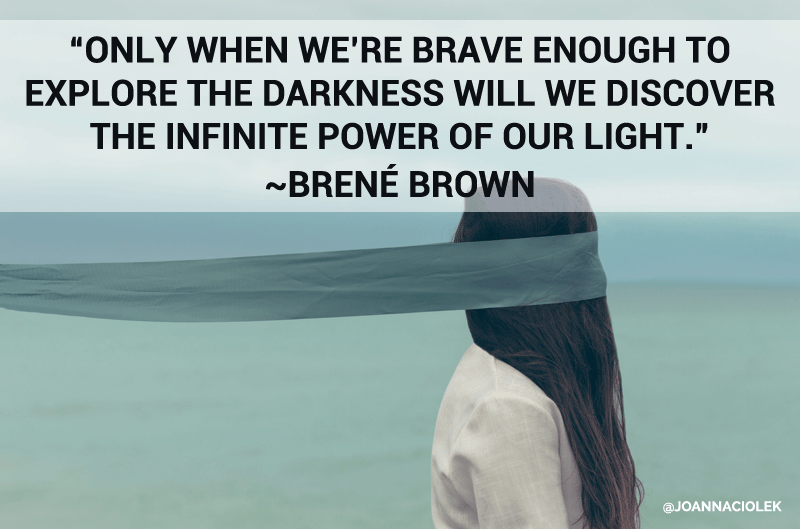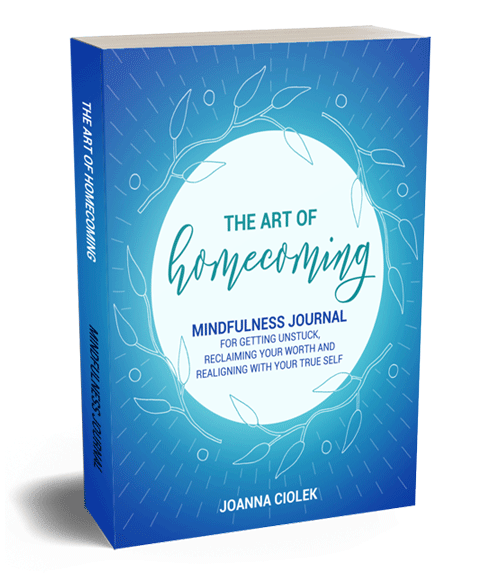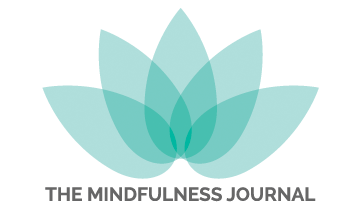“Our practice rather than being about killing the ego is about simply discovering our true nature.” ~Sharon Salzberg
One of the symptoms of living in today’s fast-paced world is the underlying feeling of loneliness, overwhelm, and disconnection. Chronically stressed and under financial and familial pressures, we often feel alone in the world, out of touch with others, overwhelmed by our emotions, and disconnected from our own bodies and ourselves.
Our world is ego-driven. We constantly compare ourselves to others, judge our performance (usually harshly), define our worth by our financial and career achievements, and criticize ourselves for failure.
This ego-based drive for success and happiness is of course ineffective. We keep wanting more, never feeling quite satisfied. And that’s because our definition of happiness as something that can be obtained externally is fundamentally misguided.
It’s a good thing to achieve external success and take pride in what we’ve accomplished through hard work. However, happiness comes when we feel fulfilled, and in order to feel fulfilled we need more than material possessions and accolades—we need to feel loved and that we belong.
This feeling was always fleeting for me growing up. A difficult childhood and my highly sensitive personality meant I grew up believing that there was something wrong with me. Feeling deeply insecure, and without an anchor at home, I had a hard time making friends and felt mostly misunderstood, hurt, and alone.
Eventually, chaos at home and bullies at school led me to disconnect, both from my body and myself. I didn’t feel like I belonged anywhere, so I made myself small, almost disappearing behind a veil of hurt, fear, and shame.
I associated my body with pain, and love with getting hurt. Living in my head was safe, and so I put up big walls around my heart and decided to make the best of what I was given.
I compensated for internal pain and emptiness with external validation: straight A’s, degrees, a career in high tech, people-pleasing, perfecting, performing, and putting on a mask to make myself look better than I felt. Eventually, I found love and friends, but the internal angst was still there, unexamined.
Unbeknownst to me, my ego was in control and the driving force behind my constant search for approval and validation. This perpetual state of searching for contentment kept me feeling empty, unhappy, and alone.
Running from yourself can only work for so long. Eventually, the walls I built became my prison.
I had to face my pain, confront my fears, and unleash the chains I’d built around my heart so that I could go on living, not just functioning.
If I wanted a fulfilled life, I had to look inside and find love there first. I had to undo years of disconnect and pain and reconnect with my body and my heart. I had to recalibrate my life toward inner peace and joy, and away from self-focus, fear, and my perceived brokenness and separateness.

Open Your Heart And Drop The Ego With These 3 Powerful Practices
Over the years I spent healing and getting back to myself, I discovered that some practices can help us drop the swelled-up ego just enough so that we can embrace our life with love. Those practices include…
Reconnecting with Our Body
At some point in our lives, most of us went through a traumatic experience that left us feeling disconnected from our body. Childhood abuse, sexual trauma, a car accident—all those experiences can lead to disembodiment.
Even if we were lucky enough to avoid trauma, we live in a world of chronic stress and overwhelm, which puts a lot of strain on our bodies. We often operate in “survival mode” and experience chronic muscle tension, fatigue, and pain.
When our body has been the source of pain, we might want to disconnect and numb out in order to protect ourselves from the hurt. We end up living in our head, often completely unaware of what is going on in our body.
Getting back in touch with our body is the first step in healing our soul, opening our heart, and dropping our ego. And yoga is a perfect tool here.
Yoga is a gentle practice that can help us reconnect with our body. Yoga means unity, between the body and mind. With breath as an anchor, flowing through poses while holding ourselves gently, we center and reconnect with ourselves in the present moment.
We get out of our head (and our ego-based identity), and back to our body and our true self. We quiet the mind, softening its grip as we turn to movement, being fully present and aware.
As we tune into each pose, we begin to feel every part of our body. We start cultivating a close relationship with ourselves, exploring our own feelings, thoughts, and relationships to the poses. Yoga becomes an intimate practice for self-exploration and self-acceptance. It facilitates the emotional release and it slowly dissolves the ego as your heart takes center stage.
Certain poses are particularly good for grounding and centering, like child’s pose, tree pose, and warrior poses. There are also many heart-opening poses—like camel, bow, or bridge poses—most of which focus on rotating our shoulders, opening our ribs, and doing backbends, which release muscle tension and unlock sensation in the heart center (also great for anxiety relief).
Kundalini yoga is another practice for awakening and healing our energy body and releasing trauma/blocks, whether in our heart center, root center, or elsewhere.
The important thing is to focus less on the “exercise” component of it and more on the mind-body-heart connection that happens when you slow down and become really present in your practice.
Befriending and Taming our Mind
Once we’ve reconnected with our bodies, we need to befriend our mind, which can easily be overwhelmed by fears, worries, doubts, self-criticism, and obsessive thoughts. We can do that through meditation.
Mindfulness meditation specifically helps us cultivate a sense of awareness and teaches us to look inward, observe our experience, and learn to let go. It brings to our attention the impermanence of life—as our thoughts and sensations change constantly, so does our experience. This means we can let go of our grip and take life as is, moment by moment.
With the breath anchoring us in the present moment, we gain a sense of freedom from our past troubles and future worries. Our fears fall away and freedom sets in—freedom to choose how we experience life that’s in front of us.
With practice, we learn to notice feelings, and emotions underneath those feeling, and the thoughts underneath those. There’s a freedom in that too—freedom to choose to not buy into those thoughts, to let go of them and choose differently. We learn to respond wisely to what’s in front of us, choosing love instead of reacting from our unconscious programming and out of learned fear.
By observing our thoughts and sensations we learn to recognize when we are afraid, hurt, angry, or ashamed, and that awareness is what allows our ego to fall away.
We begin to understand the meaning behind our experience and surround ourselves with compassion for our pain, holding ourselves with tenderness and care. We learn to drop our fears and our beliefs about ourselves and the world, and begin to live from our heart, our authentic self.
When we meditate, we start to gain a better understanding of ourselves, and our way of being starts to shift. We tap into wholeness, the realization that our lives are both joyful and painful, and no, we are not damaged, we’re simply human. And the best thing we can do is to love ourselves in this moment, to offer ourselves the care and compassion we need in order to feel soothed and safe. And then we can extend that love and care to others as well. We all suffer and have moments of struggle; this simple acknowledgment can open our heart and connect us all.
In moments of chaos or anxiety, when our mind is restless or overwhelmed, we can do simple practices that will calm our mind and tame our inner dialogue. A particularly nourishing practice is Tara Brach’s RAIN of self-compassion meditation. By observing our thoughts and feelings without judgment—the core of mindfulness meditation—we can shift from pain to compassion in a gentle way.
Another practice to try is loving-kindness meditation popularized by Sharon Salzberg.
And if sitting meditation is too hard for us, we can tap into a meditative state through movement. Rhythmic exercises such as walking, swimming, or dancing can help integrate our body-mind and reset the nervous system through the rhythmic flow of movements that will relax and soothe our mind. These will ground us in the present moment so that we can be there for ourselves, and others.
Accepting and Rewriting our Story
If we’ve been running from our pain for a long time, as I once did, this pain becomes our story; our ego is entangled in it. It’s time to untangle and release it so that we can make a new ending. It’s time to rewrite our story.
I’ve found journaling to be particularly helpful because it allows me to explore my thoughts and feelings without worrying about being judged, criticized, or rejected for who I really am.
Through journaling, we can uncover our inner pain and suffering and bring to the conscious our fears of feeling not good enough, unlovable, and ultimately alone.
As we explore our deepest thoughts and try to make sense of our experience, we begin to discern our true feelings from adaptations and programming that we’ve accumulated over our lifetime—messages we received from our family, peers, and society as a whole. We tap into our inner wisdom and intuition and gain a new perspective on ourselves and the events in our lives.
Writing is like having a deep conversation with ourselves. Faced with our shame, grief, and the sheer depth of our pain, we learn to offer ourselves the compassion and care we’ve been searching for outside of ourselves. Tending to the wounds we’ve been avoiding, we develop empathy for ourselves as vulnerable and wounded people.
Journaling is the ultimate release; we can drop our masks and explore our hang-ups and limitations head-on. We slowly unpack our deep-seated beliefs, bringing them to light. This deepens our inner knowing, helping us examine and change our beliefs about ourselves and the world. As we release the pain we’ve been holding onto our whole life, our hearts begin to soften, our armor drops, and our story changes.
There are two main ways you can journal to heal: expressive writing and prompt-based writing.
To begin expressive writing, relax your body and close your eyes. Look inward and wait for thoughts to arrive. Begin writing them down without censoring yourself. Spill it all out onto paper, letting your unconscious step forward, giving it a voice. Bring up your real feelings about yourself and the world—and not just what you’ve been conditioned to believe.
Prompt-based writing can help you think about how your family history, your cultural background, and your religion have all played roles in why you are the way you are.
For example:
- How did your family of origin show (or withhold) love?
- What are you most ashamed about regarding your family?
- What did you not get as a child that you are now seeking as an adult?
- How was anger expressed or repressed in your family growing up?
By examining your past and what shaped you, you can shed a light on your unconscious patterns and the beliefs that you accepted as truths. This is the first step in changing them and rewriting your story.
—
These three practices—yoga, mindfulness, and journaling—helped me heal, reconnect with myself, and learn to love myself, and self-love is a prerequisite to feeling the love and belonging that leads to happiness.
Whether you’ve experienced some sort of trauma or you’ve disconnected from yourself as a consequence of living in our stressed-out, achievement-focused world, these practices can help you too.
By making a little time to reconnect with your body, befriend your mind, and rewrite old stories that no longer serve you, you can stop getting hijacked by your ego and start living a freer, happier, more authentic life.
[This is an edited version of an article that first appeared on Tiny Buddha]Are You Ready To Reclaim Your Power?
If you are tired of playing roles, and feeling stuck, exhausted, and unfulfilled, I invite you on a homecoming journey with me.
This is a healing journey of reclaiming your worth, dropping what doesn’t serve you, and fully and authentically stepping into your power!
The Art of Homecoming is available here.


lucky804
Was looking for something different and stumbled upon lucky804. Not bad at all! Check lucky804 out to see if you like it!